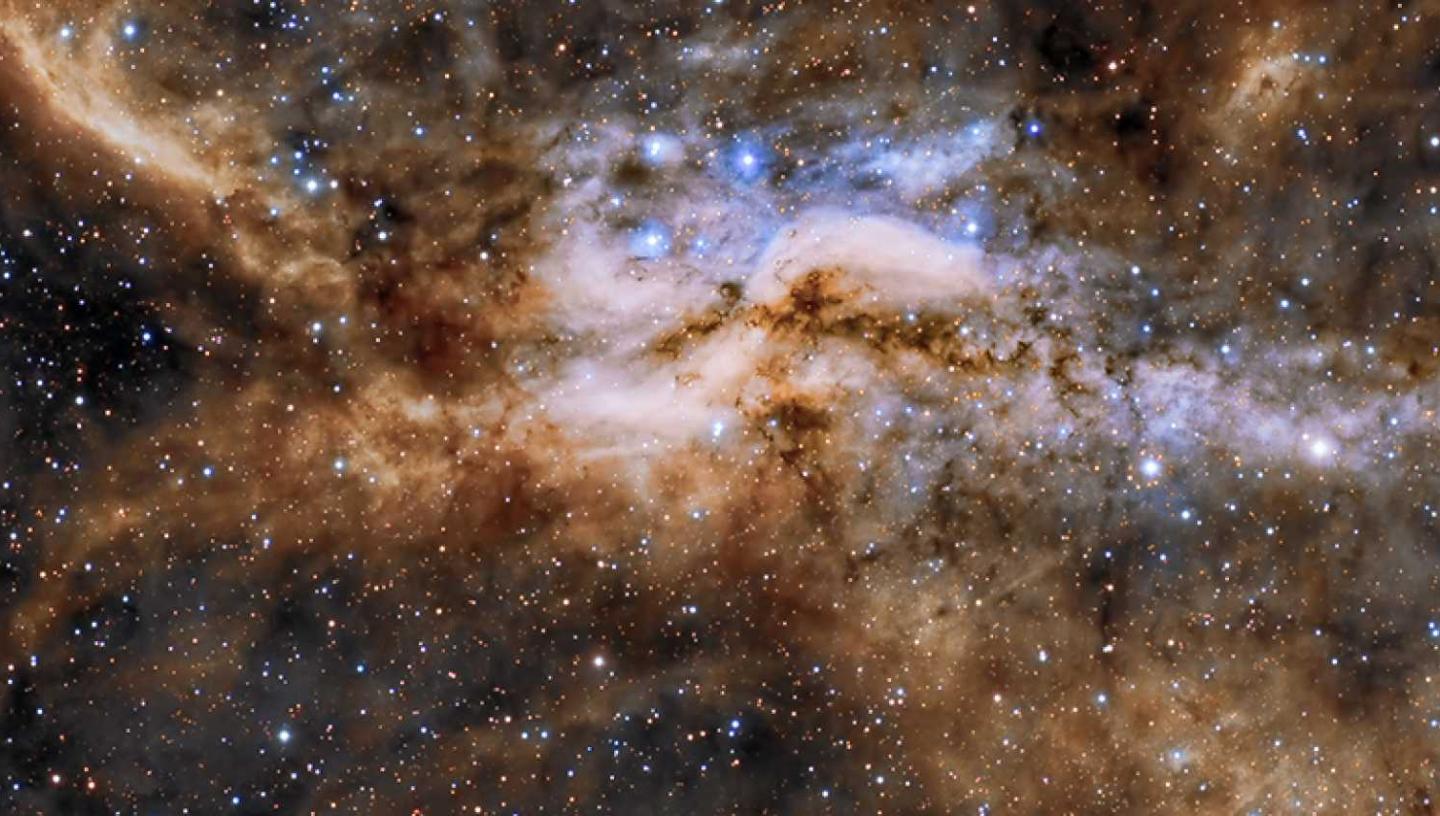
Discover what to see in the night sky in December 2020 including the Geminids meteor shower and the great conjunction of Jupiter and Saturn.
Details given are for London and may vary for other parts of the UK
Throughout the month - Take advantage of dark winter skies to spot the Andromeda galaxy
13 Dec - Scan the skies for meteors - it's the peak of the Geminids meteor shower
21 Dec - Look towards the South-West to spot the great conjunction of Jupiter and Saturn
Look Up! Podcast
Subscribe and listen to the Royal Observatory Greenwich podcast
Every month our astronomers discuss what to see in the night sky, and pick a special topic to talk about.
In December, they look at a possible explanation for the disappearance of the former oceans of Mars, and also about Jupiter's icy moon Europa that might glow in the dark.
Have a listen below, then cast your vote on our Twitter poll (@ROGAstronomers) during the first week of the month.
Our podcast is available on iTunes and SoundCloud
Astronomy in December 2020: key events and what to see
Throughout the month: The Andromeda galaxy
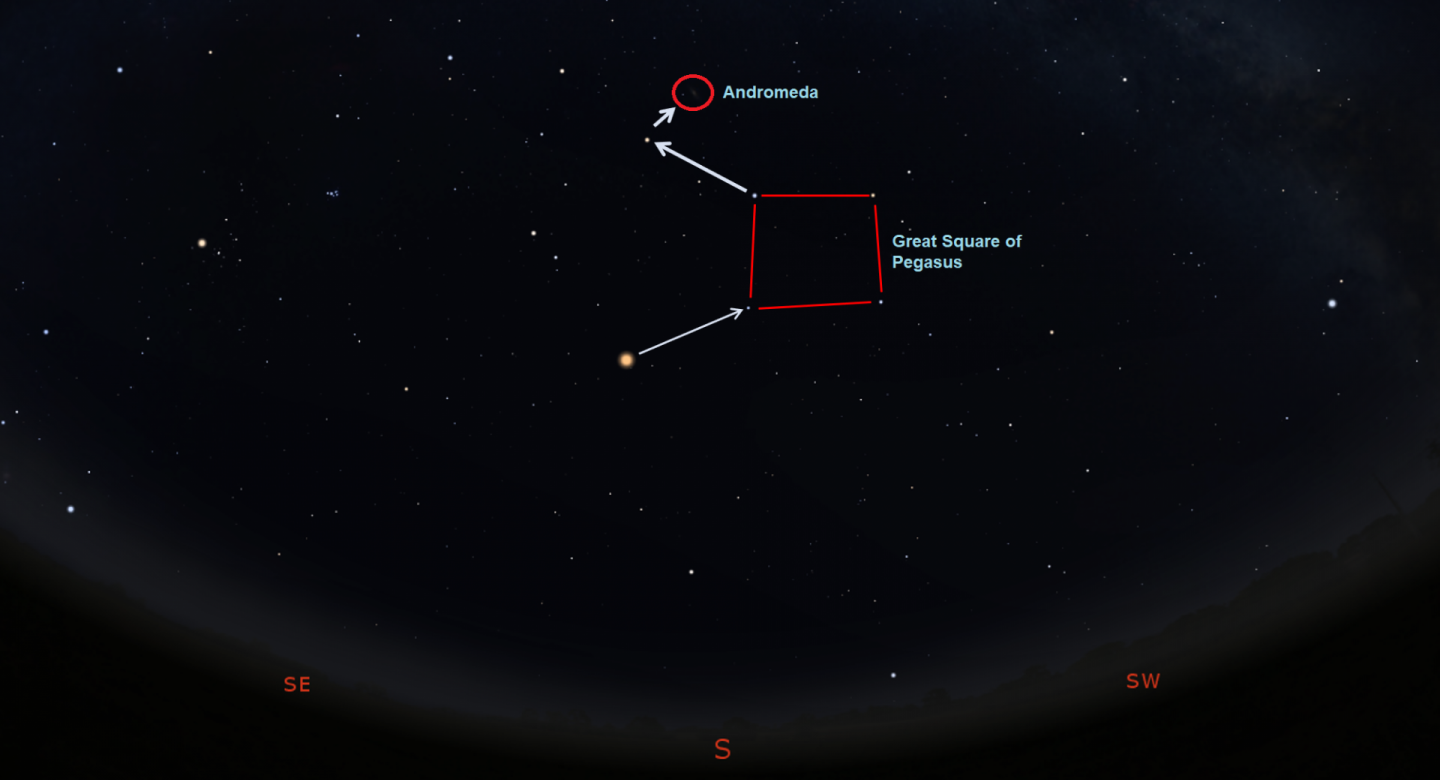
The dark winter skies give us a great opportunity to spot our nearest large spiral galaxy, Andromeda. Those of you without telescopes will need to head far away from civilisation and its light pollution to get even a glimpse of the smudge that is Andromeda, but if you’ve got a telescope you should be able to find it if you just head to a relatively dark open space. The Andromeda galaxy can be found in the constellation of Andromeda, but right now you may find it easier to locate Andromeda by starting from the planet Mars. Locate the red planet and hop from Mars to the asterism the Great Square of Pegasus. Use the star at the top left of the Great Square, the star Alpheratz, and hop to the red coloured star Mirach lying to its upper left. Scan the skies to the upper right of Mirach and you'll find the Andromeda galaxy.
13 December: The peak of the Geminids meteor shower

Peaking on the evening of the 13th of December right before the new moon, we should have a wonderfully dark sky to observe the Geminids meteor shower (weather permitting). As the name suggests, the Geminids appear to originate from the constellation of Gemini, near one of the bright ‘twin’ stars, Castor. The Geminids are a little different from other meteor showers – most meteor showers come from comets, but the Geminids arise thanks to Asteroid 3200 Phaethon. Phaethon passes closer to the Sun than any other named asteroid, and it is for this reason that it was named Phaethon, after the son of the Greek God Helios. This meteor shower will be best viewed from the Northern Hemisphere, but those in the Southern Hemisphere should still look out for it. The Geminids will peak at about 2am local time wherever you are in the world, but you should still be able to see a pretty great show earlier in the evening. At its peak the Geminids may have as many as 100 meteors per hour, so this is definitely one to watch.
21 December: The winter solstice, the peak of the Ursids meteor shower and the great conjunction of Jupiter and Saturn
This month sees the shortest day of the year for those living in the northern hemisphere, the winter solstice. This year, the winter solstice will fall on Monday, 21st December. While we typically celebrate the winter solstice for the entire day, the phrase ‘winter solstice’ actually refers to a very specific moment in time, this year falling at 10:03am GMT. ‘Solstice’ comes from the Latin morphemes ‘sol’, Sun and ‘-stitium’, to stop. So, the solstice occurs when the Sun appears to stop in the sky. Relative to a stationary observer on the Earth, the Sun is always moving from east to west, and as well as this east-west movement we also see some north-south (declination) movement. It is this movement in declination that pauses at the moment of the ‘solstice’. This slight pause isn’t visible to us on Earth (even if we could look at the Sun safely!), but that doesn’t mean it’s not worth noting – while it will still be cold for a while, the days will start to grow longer and you’ll be waking up to sunlight soon enough.
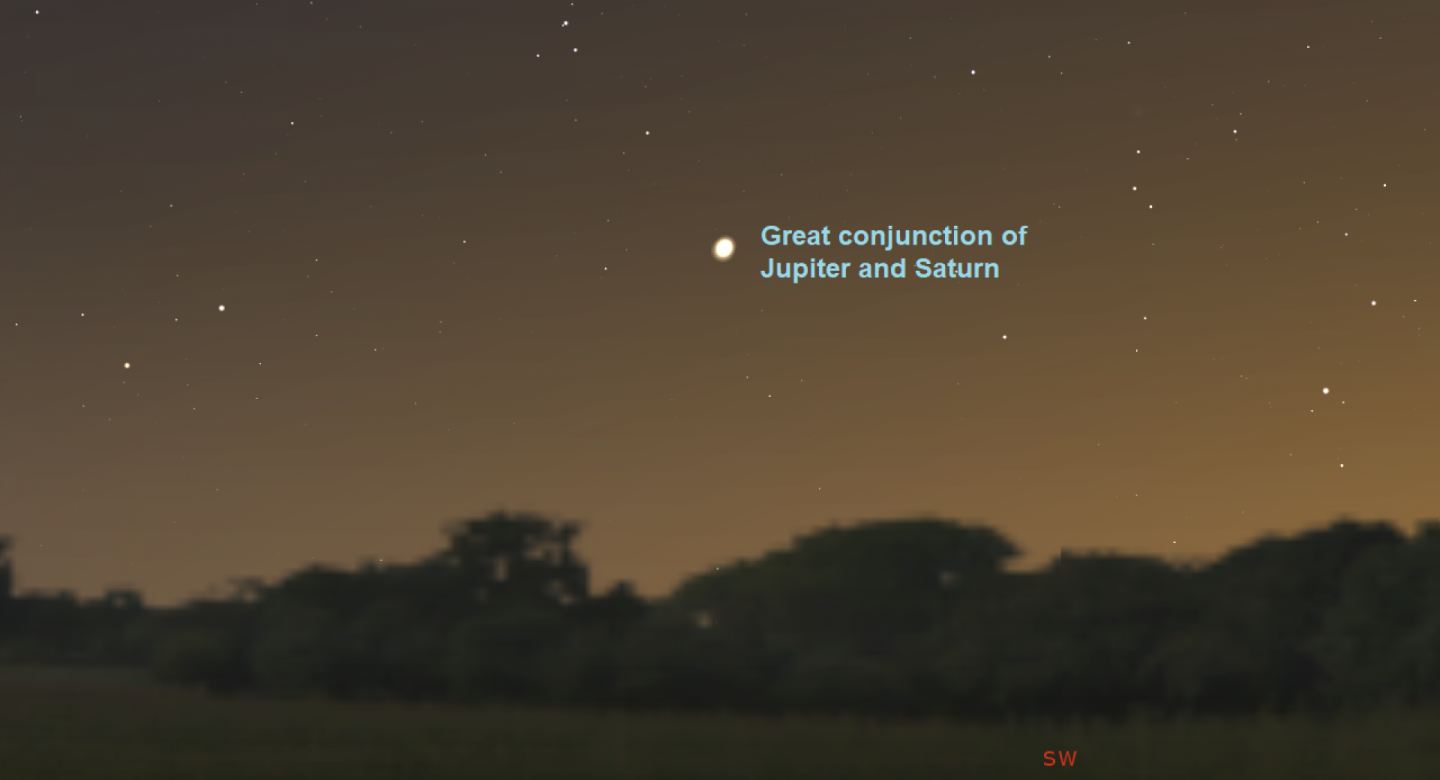
In the early evening Jupiter and Saturn will be so close together on the sky, only around 0.1 degree apart, that instead of seeing two separate points of light we may only be able to make out one very bright point. When this happens between any other two astronomical objects it is called a conjunction, but because of the historical importance of Jupiter and Saturn, when they appear close together in the night sky it is called a great conjunction. Great conjunctions occur about once every twenty years, but this year Saturn and Jupiter will be much closer than usual – closer than they have been in almost 400 years!!! For those in the UK, if you want to see the great conjunction, look to the south-western horizon just after the Sun sets on the 21st December and you should be able to see the bright light that will be Saturn and Jupiter. The planets will set by around 6pm, so you’ll only have one or two hours to spot them before this year’s great conjunction disappears from our view.
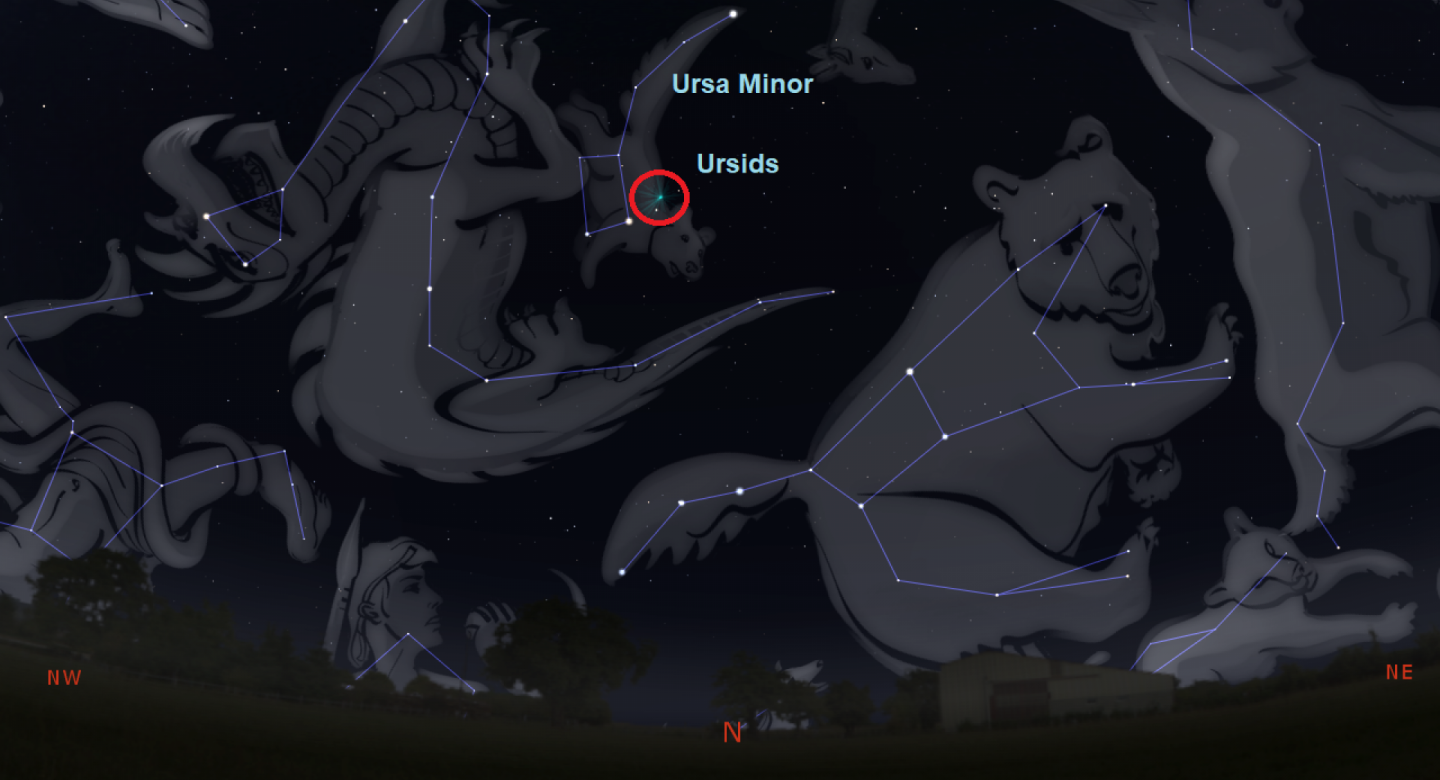
For us in the Northern Hemisphere, the Geminids aren’t the last meteor shower of the year; that honour goes to the Ursids, which won’t peak until around the winter solstice. The Ursids appear to originate from the constellation Ursa Minor. These are a much quieter affair than the Geminids, peaking at only about 10 meteors per hour, and they’ll only be visible for the true night owls; the Ursids meteor shower doesn’t start until about 1 in the morning! Watching meteor showers requires dark skies, so city-dwellers will need to find an area far from light pollution.
30 December: The Cold Moon

Moon watchers will have to wait until the end of December to see this month’s full moon, often called the ‘Cold Moon’ because of its proximity to the winter solstice. Depending on how precise you want to get, the full moon will fall on the 29th or 30th of December. We say this because the ‘syzygy’ of the Sun-Earth-Moon system will occur at around 3:30am GMT on the 30th December. The syzygy of the Sun-Earth-Moon system is the time when the three bodies are in a straight line; in this case, with the Earth positioned between the Sun and the Moon. But, for all our UK listeners, just because the syzygy isn’t until 3:30am on December 30th, that doesn’t mean that the Moon won’t look spectacular and full the evening of the 29th. With Moonrise occurring not long after 4pm, you will have all evening to watch the Moon, so we recommend making the most of the festive season and spending some time looking to the heavens.
The Moon's phases this month
| 8 December | last quarter moon (12:37am) |
| 14 December | new moon (4:17pm) |
| 21 December | first quarter moon (11:41pm) |
| 30 December | full moon (3:28am) |
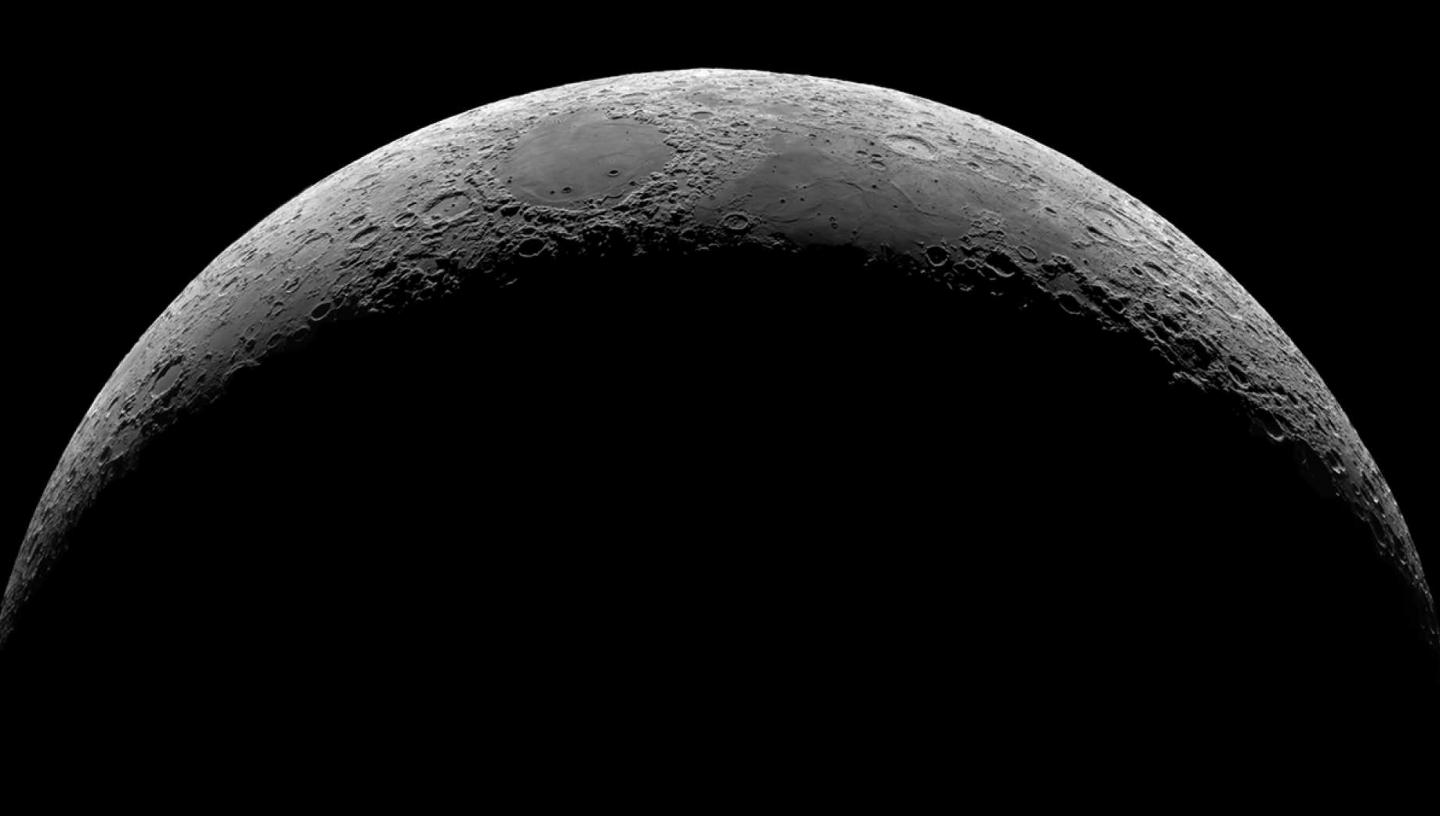
When looking at faint objects such as stars, nebulae, the Milky Way and other galaxies it is important to allow your eyes to adapt to the dark – so that you can achieve better night vision.
Allow 15 minutes for your eyes to become sensitive in the dark and remember not to look at your mobile phone or any other bright device when stargazing.
If you're using a star app on your phone, switch on the red night vision mode.
Need a stargazing telescope or binoculars? Check out our range of high quality observing equipment recommended by Royal Observatory Greenwich astronomers.
Share your astronomy pictures
This month's banner image is one of the winning images, 'Simeis 57, Propeller Nebula © César Blanco', of the Insight Investment Astronomy Photographer of the Year competition.
Would you like the chance to have your image of the night sky used for our banner image? If so, share your photos via our Royal Observatory Astrophotography Facebook group
You can also connect with us on Twitter: @ROGAstronomers
Subscribe to our brand new YouTube channel and join us on a journey through time and space as we explore our wonderful Universe.
Solar System Discovery - Online Planetarium Show
Join us for Solar System Discovery, a live online planetarium show presented by an astronomer from the Royal Observatory Greenwich. The Universe is a vast and intriguing place, and this show explores our own little corner of it: the Solar System. Starting from our home planet, the Earth, we’ll travel through our celestial neighbourhood, visiting objects like planets, moons and asteroids, and ending with a fly-out to view our galaxy, the Milky Way.
Observatory Online
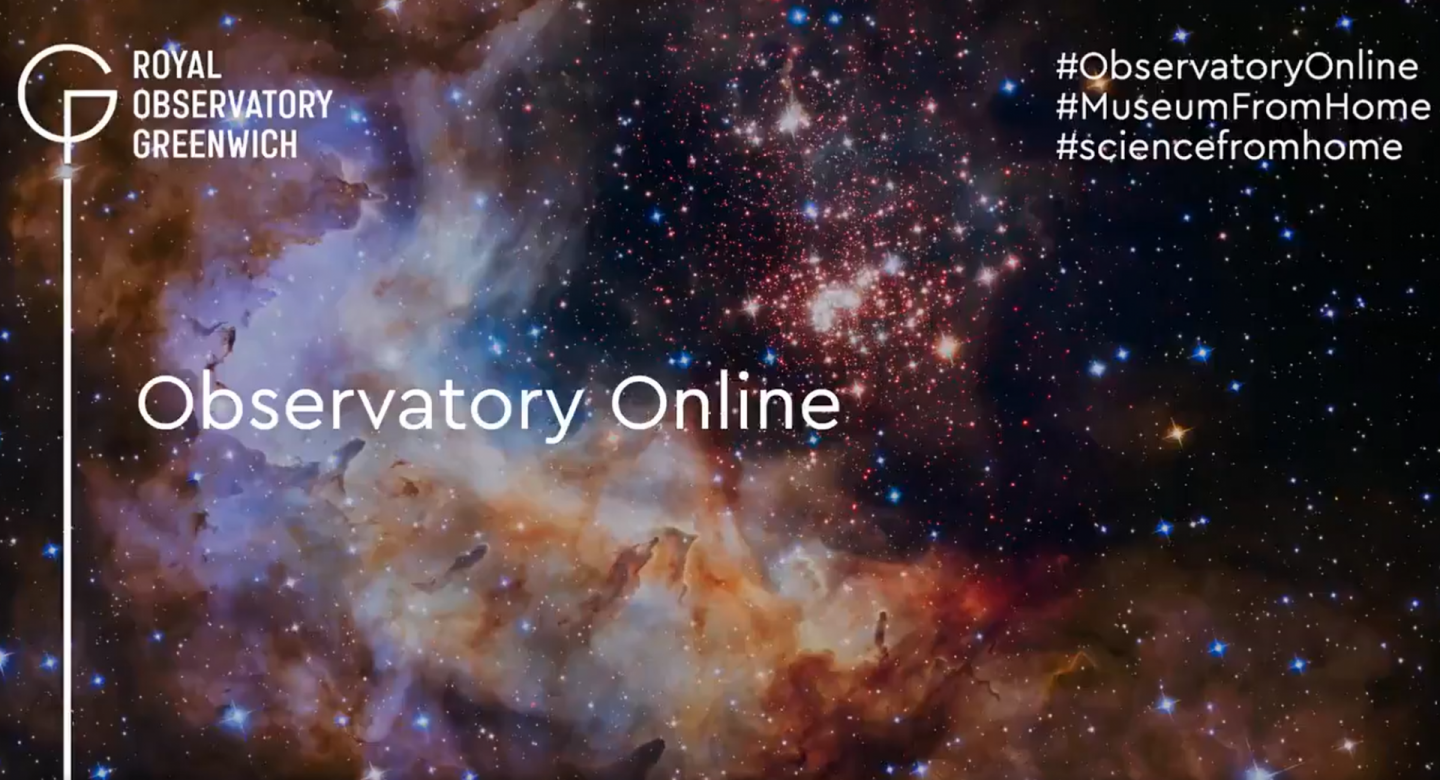
In our new Observatory Online series, join our astronomers as we answer some big questions in Astronomy. We'll be releasing the Observatory Online videos on our Twitter account (@ROGAstronomers) during the week, so don't miss out on seeing them.
Have a question about Astronomy? Simply tweet your question to our Twitter account and we will do our best to answer them. Be sure to add #ObservatoryOnline to your tweet!
Image: © César Blanco
Resources for teachers and students
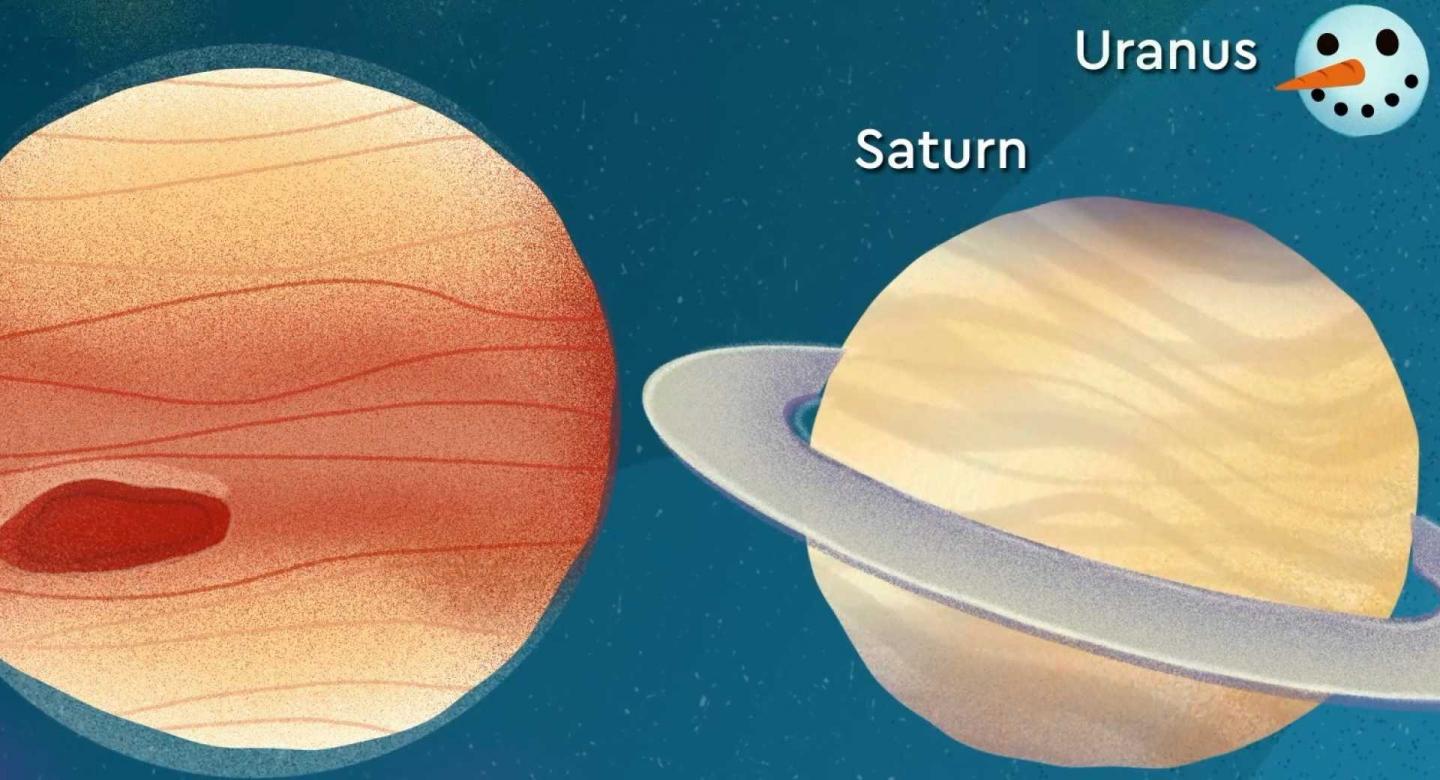
The Royal Observatory Greenwich's learning team has also created
- Free animated videos that answer the biggest questions in astronomy and free resources to go alongside them.
- A whole host of podcasts featuring interviews with real space scientists, astronauts and active researchers working in UK universities.
- A 'Learning at home' hub which contains a suite of resources for you to use at home.

